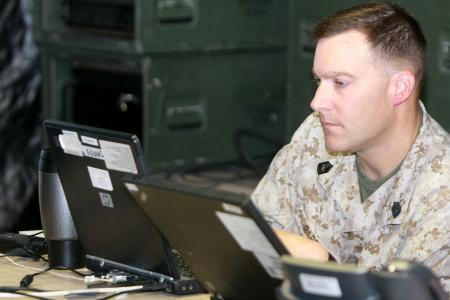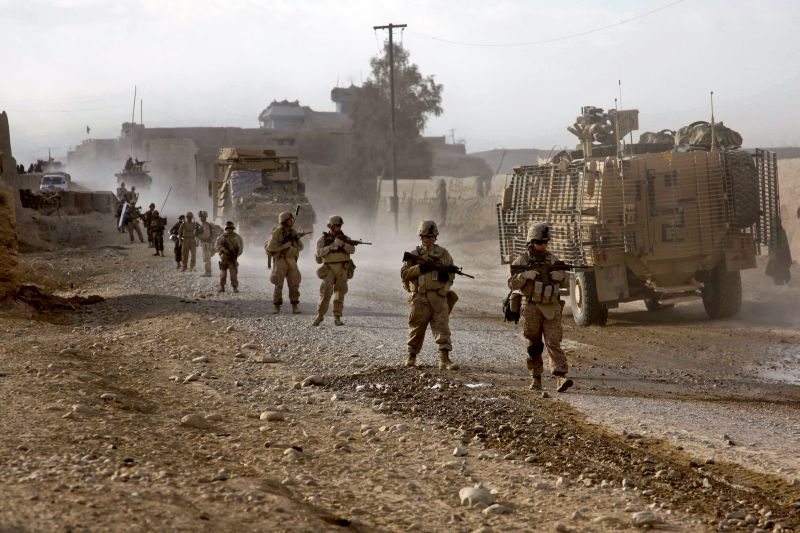Marine Air Control Squadron One, from Marine Corps Air Station Yuma, Ariz., recently ventured to Alaska for the first time to participate in the U.S. Pacific Command exercise Northern Edge 11.
The Marines, who normally train at their home station, plan to take advantage of the unique training environment offered by the joint exercise, according to Marine 1st Lt. Corey Belton, the surveillance identity director of MACS-1.
“It makes you adapt and takes away the cookie-cutter aspect when you come to a completely new environment,” he said.
MACS-1’s traditional training environment is the dry, dusty, hot climate typical under the blazing Arizona sun. Alaska’s cloudy and rainy weather is drastically different. The MACS-1 team adjusted to the wet climate with tents and tarps to protect their radar system.
The three-dimensional air defense radar provides long-range surveillance and ground-control intercept capability in a tactically mobile environment. It has a range of more than 300 miles and can scan 360 degrees in a tactical, missile defense role.
“We own air superiority in our present war,” said Marine Capt. Ramon Gonzalez, the Marine Air Control Group 38 officer in charge. “In these scenarios we provide competitive air-to-air situations for our military to train against.”
Two Airmen from the 65th Aggressor Squadron at Nellis Air Force Base, Nev., embedded with MACS-1 to relay communications in the air-to-air combat and land-to-air exercise maneuvers and deployment of counter-measures.
“It’s been a lot of fun working with the Marines; they’ve been really helpful,” said Capt. Joe Witherspoon, a 65th AS weapons controller.
The captain said there have been many lessons learned for integrating and communicating with each other concerning the different ‘jargon’ and procedures between the Marines, Navy and Air Force personnel.
“It’s been interesting to work on different equipment; it’s challenging,” he said. “We’re not really used to it, but it’s a great experience.”
The Marines’ radar has data links with surveillance, traffic and weapons information to provide “aggressors” with mock scenarios to deploy against the exercise’s good guys. Air Force F-15 Eagle “aggressors” provide a challenging opposing force for Navy F-18 Hornet pilots to defend the fleet against.
“We simulate the bad guys and provide training for the good guys,” Captain Witherspoon said. “It’s always fun and a good work experience to work in a really large exercise, it’s even larger than what we have in Nevada.
“That many aircraft in the air benefits U.S. forces; you can’t replicate the tactics that we can here,” he added.
NE11 is Alaska’s largest joint military training exercise and runs through June 24 in various locations throughout the state and the Gulf of Alaska. It prepares U.S. forces to respond to crises throughout the Asian-Pacific region. The exercise affords Army, Navy, Marine and Air Force — active duty and reserve — and National Guard members highly flexible, tactical real life experiences.











